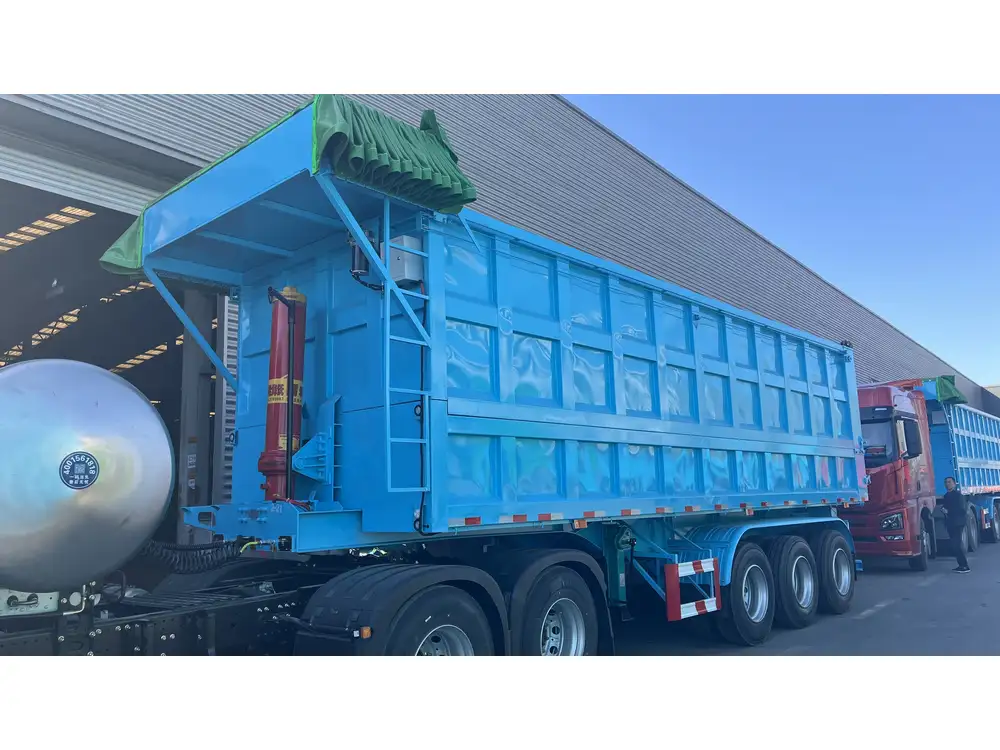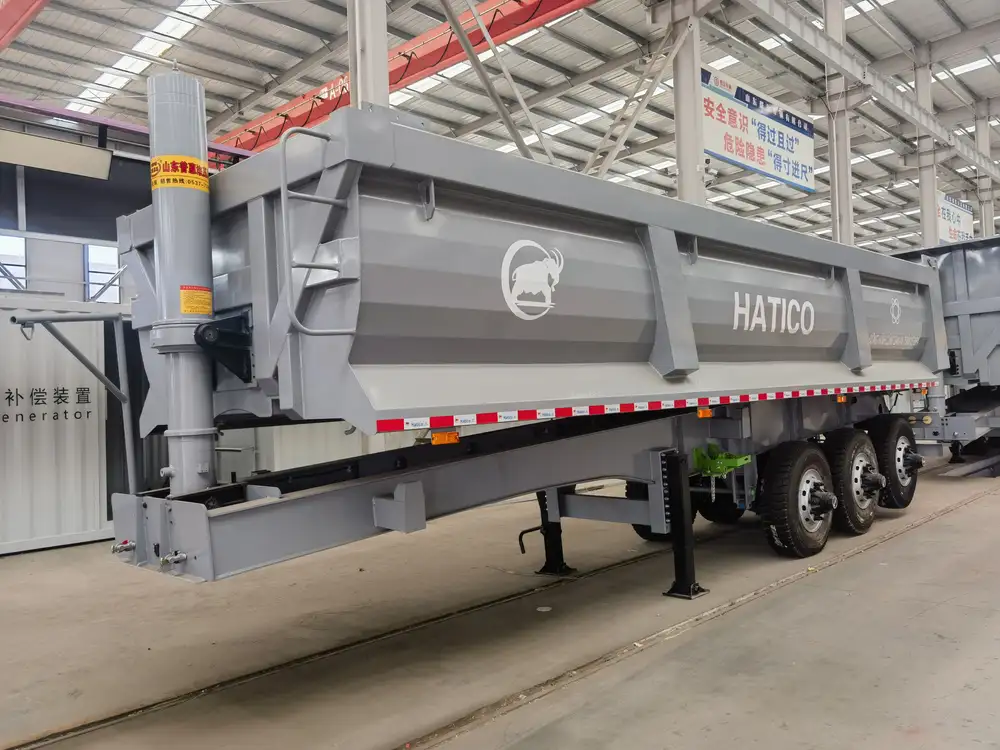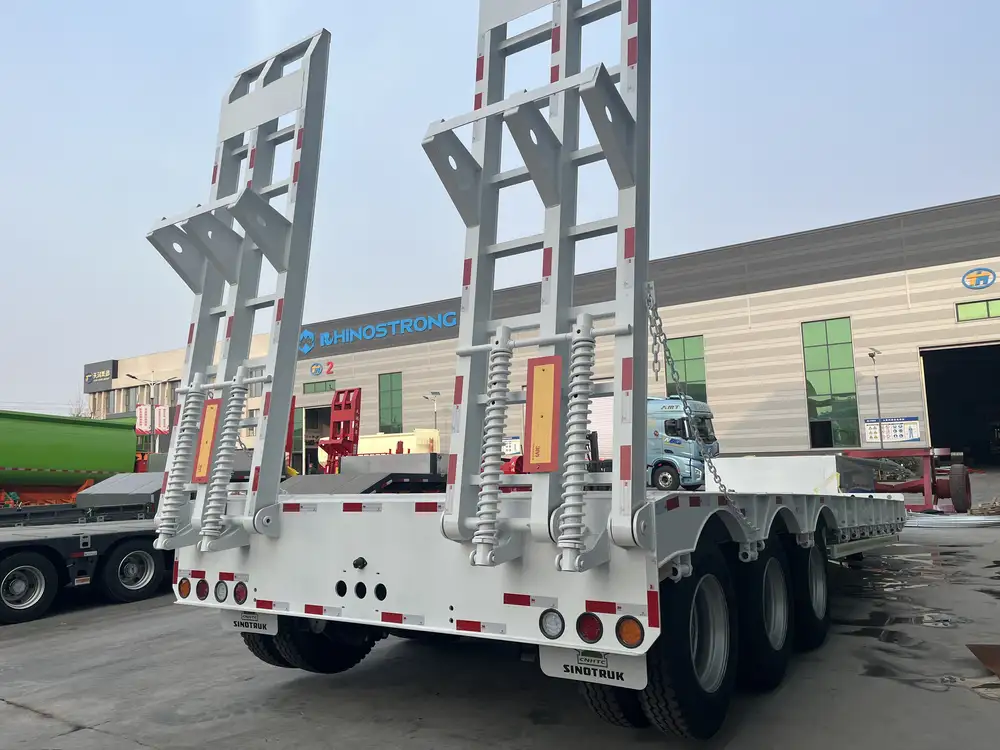When it comes to logistics, transportation, and freight services, the weight of a semi-trailer remains a critical factor in operations. A 53-foot semi-trailer, a standard in the United States, presents unique considerations regarding its weight, payload, and overall efficiency. This comprehensive guide delves into the specifics of how much a 53-foot semi-trailer weighs and explores why this knowledge is instrumental for manufacturers, logistics companies, and truck operators alike.
Overview of Semi-Trailer Dimensions and Specifications
Typical Specifications of a 53-Foot Semi Trailer
| Feature | Standard Measurement |
|---|---|
| Length | 53 feet |
| Width | 8.5 feet (102 inches) |
| Height | 13.5 feet |
| Gross Vehicle Weight Rating (GVWR) | 80,000 pounds (max) |
| Empty Weight | Approximately 15,000 to 20,000 pounds |
| Load Capacity | 60,000 to 65,000 pounds (varies) |
Understanding these specifications allows operators to better gauge not just how much a semi-trailer weighs when empty, but also how much cargo it can effectively carry without breaching regulatory limits.

Factors Influencing the Weight of a 53-Foot Semi Trailer
A variety of factors come into play when determining the total weight of a semi-trailer:
Construction Material: The primary materials used in trailer construction—aluminum, steel, or composite materials—significantly affect weight.
- Aluminum Trailers: Lightweight yet durable, generally weighing less than their steel counterparts.
- Steel Trailers: Heavier but often more robust for specific applications.
Design Features: Custom design elements such as aerodynamic features, additional reinforcement, and trailer configurations (e.g., flatbed, refrigerated) can lead to variations in weight.
Trailer Accessories: The weight of accessories, including tarps, toolboxes, and additional structural elements, should also be considered.
The Average Weight of a 53-Foot Semi Trailer
While the weight of a 53-foot semi-trailer can range from around 15,000 to 20,000 pounds when empty, different configurations can yield different results:
- Dry Van Trailers: Typically weigh between 15,000 to 16,500 pounds.
- Reefer Trailers (Refrigerated units): Can weigh between 16,500 to 20,000 pounds due to their insulation and refrigeration systems.
- Flatbed Trailers: Generally fall in the 16,000 to 19,000 pounds range.
Importance of Knowing Trailer Weight

Regulatory Compliance
Compliance with local and federal weight regulations is essential for the legal operation of commercial trucks. For instance, the Federal Motor Carrier Safety Administration (FMCSA) mandates that the maximum Gross Vehicle Weight (GVW) is capped at 80,000 pounds for most vehicles on interstate highways.
Failure to adhere can result in fines, penalties, or even the revocation of operating permits. Regular weighing, especially before and after loading, aids in maintaining compliance and maximizes payload efficiency.
Economic Implications
Transporting freight incurs costs not just from logistics, but from fuel as well. Heavier loads demand more fuel; therefore, understanding the weight dynamics of a 53-foot trailer assists in estimating transportation costs and maximizing profitability.
Furthermore, maintaining an optimal weight can reduce wear and tear on vehicles, prolonging their lifespan and minimizing maintenance costs—an often-overlooked aspect of weight management in logistics.
Operational Efficiency
Knowing the weight of a trailer facilitates better load distribution and enhances safety. Unevenly distributed or overloaded trailers can lead to:
- Decreased handling stability.
- Increased risk of accidents or trailer tipping.
- Higher tire wear and a reduced lifespan for all vehicle components.

Impact on Fuel Efficiency
Investing in weight management cultivates fuel efficiency. Lighter loads lead to reduced fuel consumption, a significant factor considering rising fuel prices. Research indicates that for every 1,000 pounds of additional weight, fuel economy can decrease by about 1-2%.
Calculating the Weight of the Trailer and Load
To accurately calculate the total weight being transported, we can use the following formula:
[ \text{Total Weight} = \text{Empty Weight of Trailer} + \text{Weight of Cargo} ]To break it down further:
If a dry van trailer weighing 15,500 pounds is loaded with 45,000 pounds of cargo, the total weight would be:
[ \text{Total Weight} = 15,500 + 45,000 = 60,500 \text{ pounds} ]For a refrigerated trailer weighing 18,000 pounds with a load of 40,000 pounds:
[ \text{Total Weight} = 18,000 + 40,000 = 58,000 \text{ pounds} ]
Both examples keep within DOT regulations allowing a maximum weight of 80,000 pounds.
Compliance and Safety Measures

Regular Weighing
Frequent weighing—at certified truck scales—ensures compliance with weight regulations. This proactive approach can prevent overloads and identify discrepancies in expected versus actual weights.
Load Distribution Techniques
Properly distributing cargo within the trailer is crucial. Load distribution not only ensures safety but also enhances fuel economy and driving stability. For optimal distribution:
- Place heavier items at the front near the axles.
- Distribute weight evenly across both sides of the trailer.
- Avoid stacking loads too high to maintain a lower center of gravity.
Environmental and Sustainability Considerations
The transportation industry faces heightened scrutiny regarding environmental impact. Trailer weight plays a significant role, as lighter trailers contribute positively to reducing carbon emissions and enhancing fuel efficiency.
Manufacturers are increasingly directed toward sustainable practices. Using lightweight materials like aluminum reduces the overall weight, thus leading to lower fuel consumption and minimized environmental footprints.

Conclusion: Why Weight Matters
The weight of a 53-foot semi-trailer is more than just a number; it’s a pivotal aspect of operation efficiency, regulatory compliance, and profitability in the transportation sector. Understanding its implications ensures that manufacturers and operators can maximize their resources while maintaining safety and cost-effectiveness.
By embracing knowledge surrounding trailer weight, stakeholders can make informed decisions, optimize payload capacities, and enhance overall logistical effectiveness—fostering a more robust transportation infrastructure.
In a world where the efficiency of logistics hinges on details, recognizing how much a 53-foot semi trailer weighs becomes an essential component in navigating the complexities of freight operations. As we move towards a more sustainable future, keeping these factors in mind will undoubtedly contribute to evolving transportation practices and enhanced operational success.



